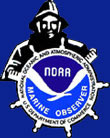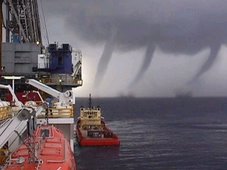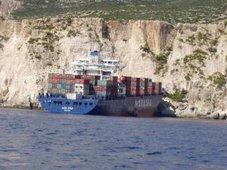 August 4th Tornadoes and Damaging Winds (Updated Information)
August 4th Tornadoes and Damaging Winds (Updated Information)Updated August 15, 2008
A total of 5 tornadoes was confirmed by the National Weather Service as having occurred during the severe thunderstorm episode Monday evening, August 4th, across the area.
Griffith, IN, rated EF2, Bloomingdale, IL, rated EF1, Bolingbrook, IL, rated EF1, Orland Park, IL, rated EF0, Boswell, IN, rated EF0
The cluster of thunderstorms which moved across northern Illinois and northwest Indiana on this day can be described as a mesoscale convective system (MCS). This is a continuous line of thunderstorms spanning many miles, for several hours, affecting many locations. This meteorological phenomenon is not uncommon for northern Illinois and northwest Indiana for this time of year. The pattern is distinguished by upper level winds orienting themselves in a northwest flow pattern. This orientation allows waves of energy (upper level disturbances) to traverse the region. Combining this with warm, moist, unstable conditions can trigger thunderstorm development and lead to a storm complex similar to Monday's occurrence. As this pattern persists, multiple waves of energy move across the region, providing several rounds of MCS activity.
Low level circulations that can accompany a Bow Echo can also lead to significant damage. These low level circulations are generally near the leading edge of the line of storms, but north of the bow apex. It is these low level circulations that can create brief spin ups, or non-supercell tornadoes. Although these tornadoes are generally brief and weak in nature, they can still create damage as high as EF2. The environmental shear as discussed earlier is what can be the impetus for tornadogenesis along the leading edge of this type of storm. The environmental shear creates a horizontal circulation similar to a pinwheel. This circulation, or vorticity, gets tilted into the vertical, and helps create these low level circulations.
The widespread severity of wind damage with this unusual event will mark Monday’s storm as an historical one. The Bow Echo that moved across northern Illinois and northwest Indiana produced winds to 94 MPH at one point, while creating widespread damage and at least three confirmed tornadoes.
National Weather Service storm survey teams immediately assessed the damage which occurred with this devastating MCS. This attempted to validate any tornadoes indicated by radar or by reports sent in via the spotter network. Any tornado confirmed by the NWS gets a strength rating based on the damage inflicted. This rating is based off of the Enhanced-Fujita scale. Included with the rating, are the length and width of the tornado's path. This information is used by the NWS for agency use, but is also used to progress the science. Storm surveys used in conjunction with case studies can be a valuable tool to provide knowledge and insight each occurrence. Doing this allows meteorologists to better understand storm scale features that can lead to another significant event similar to Monday's. The goal here is to provide a better service to the public and the meteorological community.
The Chicago Weather Forecast Office would like to extend great thanks for all who helped with this event. This includes trained spotters, emergency managers, the media, law enforcement, and amateur radio network.
From Extreme Weather
Tropical Storm Fay
Is it a hurricane or tropical storm? The National Hurricane Center's projected path of movement for Tropical Storm Fay included a fourth Florida landfall as it dumped "historic" amounts of rain on parts of Central Florida. Read how scientists track storms from space in Extreme Weather on sale now.
NEW NWS MARINE WEATHER PORTAL

Tropical Storm Fay expected to hit Fla. 3rd time
By BRIAN SKOLOFF, Associated Press Writer
Tropical Storm Fay hung offshore Thursday and poured more rain on Florida's central Atlantic coast after flooding hundreds of homes, trapping residents and leaving much of Florida a soggy mess.
Alligators, snakes and other wildlife were spotted in some flooded neighborhoods after high water drove the animals from their normal lairs.
Forecasters expected the storm to continue a zigzag course by hitting the state for a third time in a week, along with Georgia, but didn't think it would strengthen to a hurricane over the Atlantic.
The storm flooded hundreds of homes in Brevard and St. Lucie counties, some with up to 5 feet of water, forcing dozens of rescues. The Federal Emergency Management Agency was reviewing Gov. Charlie Crist's request for a federal emergency disaster declaration to defray rising debris and response costs.
"I want to stress that this storm is becoming a serious catastrophic flooding event," Crist said.
Water was still high Thursday in much of southern Brevard County and officials feared the northern sections would be inundated next.
Emergency management spokeswoman Kimberly Prosser said wildlife officers have received several calls about alligators and other animals spotted in flooded neighborhoods, but only two small alligators have been captured.
"In the past we've usually had flooding in pockets. I have not seen anything this widespread throughout the county," Prosser said.
About 10,200 homes and businesses in the county were without power early Thursday, and about 134 people spent the night in shelters, she said. The county is home to NASA's Kennedy Space Center, which has been closed to most workers and all visitors since Tuesday. The center reported no significant damage.
"We can't even get out of our house," said Billie Dayton of Port St. Lucie, as waters lapped at her porch. "We're just hoping that it doesn't rain anymore."
Fay could dump 30 inches of rain in some areas of Florida and the National Weather Service said nearly 25 inches had already fallen near Melbourne, just south of Cape Canaveral.
In Jacksonville, residents were told to expect the brunt of the storm later Thursday. With schools, government offices and many businesses closed, streets were quiet and traffic was light at what would normally be the start of rush hour.
John Place, at a local Wal-Mart, said he and his wife has been prepared for quite a while. "This is not a panic situation," he said. "If it was a Category 1, 2 or 3 (hurricane) making a direct hit on Jacksonville, you'd have something."
The southern half of the Georgia coast was under a tropical storm warning as the outer bands of Fay brought start-and-stop rains along the entire 100 miles of the state's coastline up to Savannah, which received more than an inch of rain Wednesday.
The National Weather Service said isolated flooding was possible in southern Georgia, where Fay was forecast to dump 3-6 inches of rain if it followed the predicted path south of the Georgia-Florida border through Friday.
The Georgia Emergency Management Agency said residents in the southern counties should stock up on enough food and water for three days. Isolated flooding and power outages were possible, said GEMA spokesman Ken Davis.
The storm was just off the Florida coast early Thursday but continued to dump heavy rain. At 8 a.m. EDT, the storm's center was essentially stalled, located about 20 miles east-southeast of Daytona Beach. It was expected to begin slowly moving toward the west-northwest later in the day, bringing heavy rains to northern Florida and southern Georgia.
Maximum sustained winds were near 60 mph. The National Hurricane Center said some strengthening was possible while the center was still over water. But the storm was expected to weaken after moving back over land.
The erratic storm first struck Monday in the Florida Keys, then veered out to sea before traversing east across the state, briefly strengthening, then stalling. For much of Wednesday, the storm barely moved, dumping inches and inches of rain over coastal central Florida.
If Fay strikes Florida again as expected, it would be just the fourth storm in recorded history to hit the peninsula with tropical storm intensity three separate times. The most recent was Hurricane Donna in 1960, said Daniel Brown, hurricane specialist at the National Hurricane Center.
No deaths have been reported in the state as a result of Fay, which formed over the weekend in the Atlantic and was blamed for 20 deaths in the Caribbean before hitting Florida's southwest coast.
|
MARITIME NOTE
Seaworthy or she-warty
By Gerry Geronimo
His office at the Romulo Law Office on the 30th floor of the Citibank Tower was no more than 20 paces from mine, but his alma mater beat me to him. I was still in the midst of conceiving a plan for him to hold an MCLE-accredited seminar on how to understand the legal maneuverings relating to Suspicion Lines’s Princess of the Stars now lying capsized near the shore of Sibuyan Islands when the UP College of Law was already signing him up for its public forum scheduled for Aug. 13.
Accordingly, with the lot of the non-medal athletes in the Beijing, I stood by the wayside Wednesday last week as UP Law got first crack at lawyer Eduardo Hernandez’s lecture on the legal liabilities for maritime disasters. But now that UP has claimed its prize and Hernandez’s views are in the public domain, I join in the cheering and the clapping for Philippine admiralty law’s Michael Phelps.
Hernandez gave his audience many eye-opening, is not conscience-shaking, insights. For example, in the Philippines, he points out, while bus drivers have gone to jail for the deaths in road accidents, not a single ship captain or shipowner has yet been convicted of the crime of multiple homicide thru reckless imprudence, despite the more than 6,000 deaths in maritime tragedies. But Hernandez was most effective when he explored how the legal concept that the ship’s seaworthiness is relative could organize the many facts and figures that had come out in the media on the Princess of the Stars and its ill-fated voyage.
Whether a ship is seaworthy or not, says Hernandez, is a question that can be answered in relation to the voyage contemplated. “Crossing the Atlantic calls for stronger equipment than sailing in a small lake. Sailing into a storm requires a higher degree of seaworthiness of the vessel.” Thus, it was held by the Supreme Court in Caltex vs. Sulpicio Lines, GR 131166, promulgated Sept. 30, 1999, that “for a vessel to be seaworthy, it must be adequately equipped for the voyage and manned with a sufficient number of competent officers and crew.” So also, citing Justice Brad Giles of New Zealand in his Shipping Law, Hernandez explains that to be seaworthy, the vessel must not only be an efficient instrument of transport in relation to the voyage, sufficiently provided with fuel and ballast, but also manned by an efficient crew.
In addition to being dependent on the interplay of structure, sea, and crew, seaworthiness is also relative as to time. The time when a ship is to be determined seaworthy, Hernandez points out in conformity with Sections 113 to 115 of the Marine Insurance Act, is at “the commencement of every voyage.”
Finally, the responsibility for so determining belongs to the shipowner himself. The reason is obvious: it is the carrier who is charged with the duty of extraordinary diligence. It is only reasonable that that duty be imposed while the ship is still at port and the owner and his people on shore are in a position to take remedial measures, including not permitting the ship to sail, should they find the ship not fit for the particular voyage to be made.
With these principles explained, Hernandez proceeded to ask some questions, some I heard from him for the first time, others already posed by members of the House of Representatives and of the Board of Marine Inquiry now officially looking into the tragedy. At the risk of over simplifying, the three component issues of seaworthiness are (a) the condition of the Princess of the Stars at the time it embarked on its journey to Cebu; (b) the current and foreseeable condition of the sea along the way; and (c) the capability of captain and crew to steer the ship under such conditions reasonably foreseen.
Prudently not pre-empting the current investigations, particularly of the Bureau of Marine Inquiry, whose report was reported to have been completed last week and was promised to be released to the waiting public soon, Hernandez did not give answers. But by using Hernandez’s enlightening conceptual framework, any reader of the daily broadsheets can easily come to his own judgment on whether on that fateful evening of June 20, the Princess of the Stars was fit to make the voyage she was unable to finish; the needed facts have all been made bare at the government hearings. In my view, here are some.
The Princess of the Stars was an old dame. She was admittedly built in Japan in 1984 and had seen better days as a ferry boat under the name “Ferry Lilac.” No longer considered by Japanese law fit to ply her trade in Japan, she was already junk when sold to Sulpicio Lines in late 2003. At 24 years when she made her final journey, pointed out Hernandez, the ship was no longer qualified, had a foreign-owned company applied under the bare boat charter law, to fly the Philippine flag to engage in foreign trade. Indeed, we impose a higher standard for ships flying the Philippine flag in their masts when in international commerce than for ships carrying poor Filipino passengers in their cabins in the coarse of local inter island trade.
Like some aging woman, the vessel underwent a bit of cosmetic lifting. She was modified in 2004 to raise her passengers capacity by 1,000. As a cargo vessel, she was a RO-RO, roll in and roll out. That explains why, like many mestizas of yesteryears still showing up in the society pages, she had a flat bottom that made her, according to Hernandez, “inherently unstable.” She was overweight, i.e. overloaded, too, when she left port for the last time, by at least 96 tons.
Nevertheless, the fat and flat Princess of the Stars boasted of an evaluation last year by the local unit of Bureau Veritas, said to be an internationally reputed classification society, as not having any major defect, with its hull and machineries in good order. But the classification was only a provisional one, the work of the local unit still needing to be confirmed by the mother’s unit in Singapore. The initial provisional certificate, which expired last February, had to be renewed because the Singapore office was too busy with other things. If a classification society cannot give prompt classifications needed to inform us promptly in a definitive way about the fitness of our ships, why is it allowed to offer its services here? That’s my question, not Hernandez’s.
It was this senior lady that set out for a rendezvous with juvenile typhoon “Frank” in the evening of June 20. Pagasa said that by 4 p.m. of that day, “Frank”, the huge dude, was already cavorting at 50 kms southeast of Catbalogan, packing maximum sustained winds of 140 kph in his belly and gustiness up to 170 kph. He was moving west northwest at the speed of 19 kph. Signal no.1 was up in Manila, where the Princess was priming herself; no. 2 in Romblon and Northern Cebu, an area known as the graveyard of many ships; and no. 3 in Biliran Island. Actually, in Cebu, where the Princess was to disgorge passengers and cargo, the Coast Guard suspended sea travel as early as 7 a.m.
The feisty lady nevertheless sailed out at around 8 in the evening, even as the bars of Metro Manila had dimmed their lights bereft of GROs, to meet up with “Frank” in an illicit tryst in the following morning. It was all over by noon of the 21st. “Frank” left Princess of the Stars, lying unladylike on the shores of Sibuyan, her bottom up for everyone to stare at in the afternoon sun.
In her deadly trip, she was manned by captain and crew duly licensed by Philippine authorities. I believe they were the best we’ve got. After all the better ones, said Hernandez, have gone aboard on foreign ships with better safety and higher pay. They were very senior; one of them, in charge of the engineering department, was in fact 81 years old. I pray to God that they are all still alive to tell their stories. Particularly the 81-year old. His would surely rival the Rime of the Ancient Mariner.
From Holland & KinghtSan Francisco – senior USCG officer charged with use of cocaine
The US Coast Guard issued a press release stating that a senior Coast Guard officer has been charged with wrongfully using cocaine and has been temporarily reassigned to a non-supervisory position. The charges are under investigation and the individual is presumed innocent until and unless proven guilty in a court of law. (8/20/08).
The Alaska Department of Environmental Conservation (ADEC) issued the Ocean Ranger Access Status Report, which indicates that after some initial issues, Ocean Rangers on cruise ships operating in Alaska waters are provided sufficient access to all areas of the ships needed to perform their duties. (8/15/08).
Have a great weekend!
RS



































































































![Validate my RSS feed [Valid RSS]](valid-rss.png)